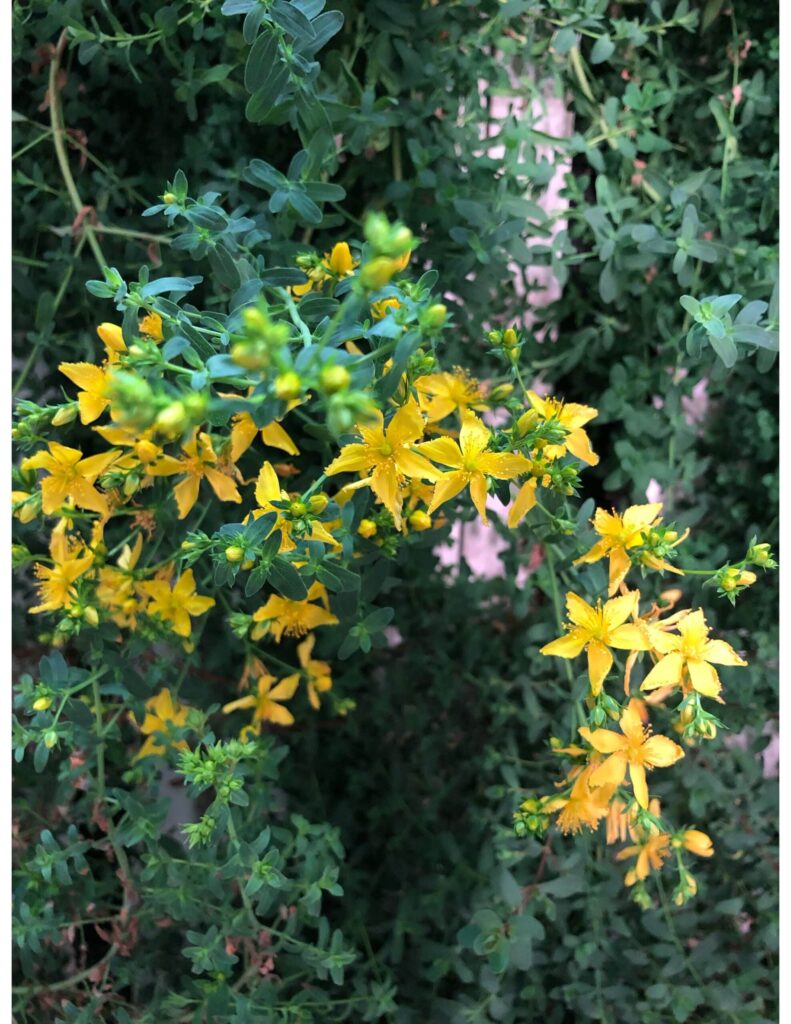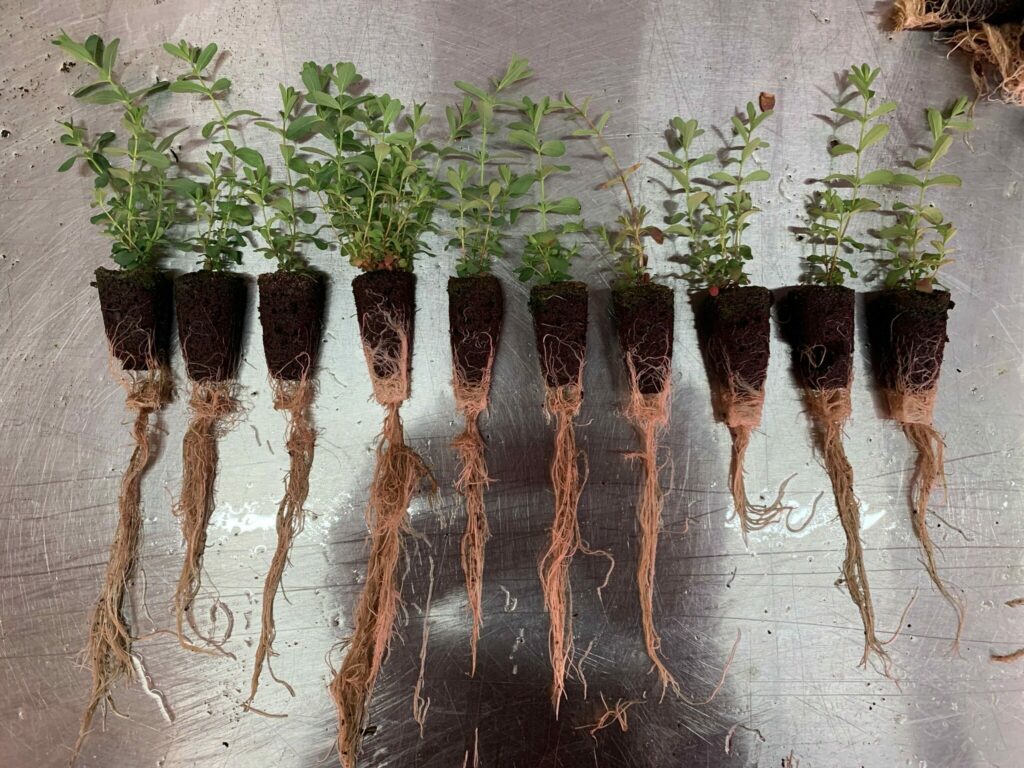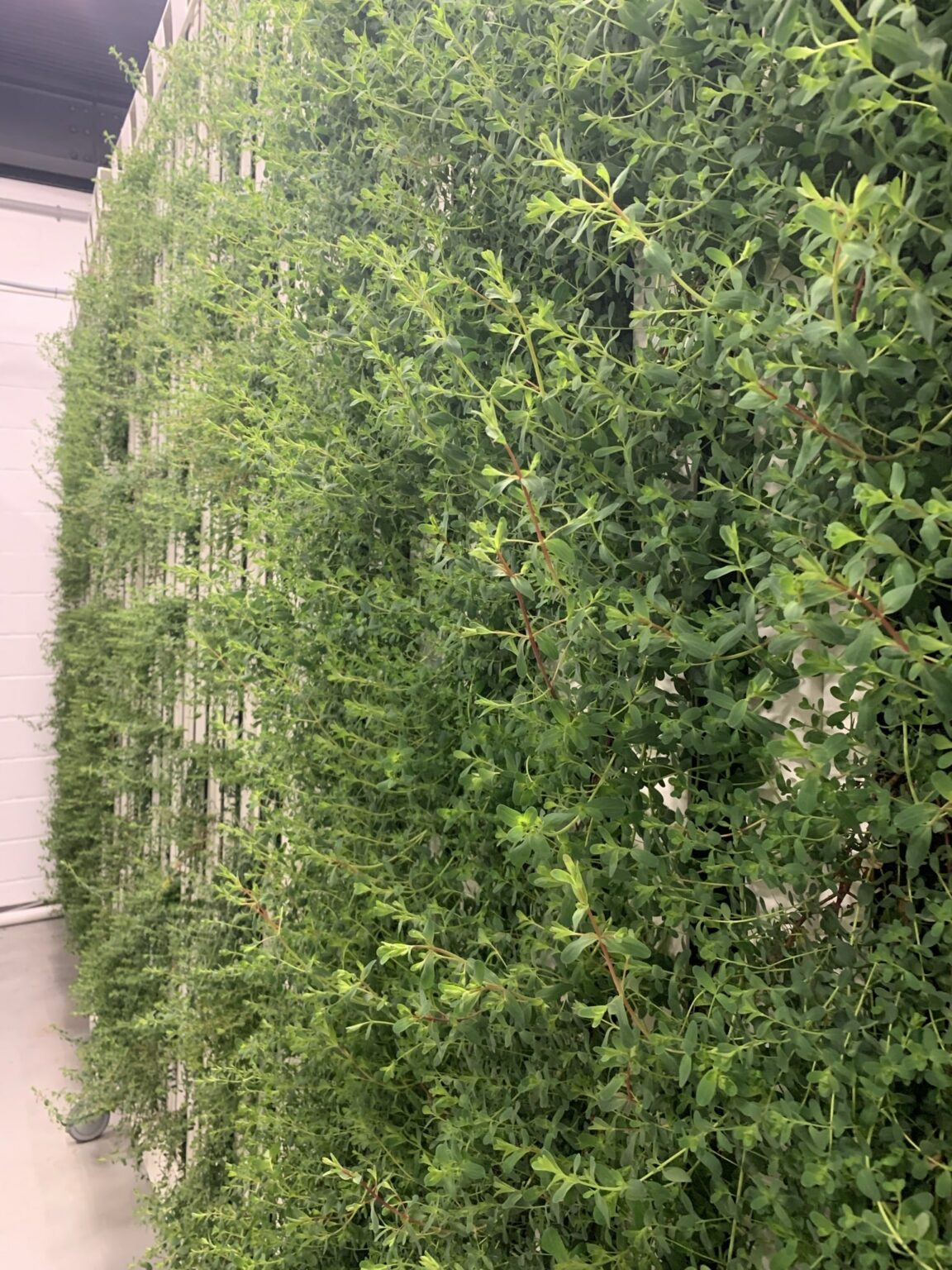St. John’s Wort (SJW) hypericum perforatum is a perennial shrub with a long history of use dating back to ancient Greece and used as a traditional medicinal crop for a wide variety of treatments including Mental Health treatments for mood disorders and depression.
Currently, Selective serotonin reuptake inhibitors (SSRIs) are one of the most commonly used antidepressants however one of the biggest drawbacks of SSRI’s and other antidepressants, is the potential side effects. There have been numerous medical studies done by reputable institutions that have shown that SJW shows a significant reduction in mild depression with fewer potential side effects. SJW could fill a gap in treatments for depression for people who have tried other treatments and are looking for a holistic alternative.

St. John’s wort is a shrubby plant with clusters of yellow flowers. They have oval, elongated petals and both the flowers and the leaves are used as medicine. Typically, St. John’s Wort has been grown in soil as a cash crop for pharmaceutical companies, where there can be wide variability in concentrations of bioactive components. Currently there is very little research for SJW being grown in controlled environment agriculture (CEA) systems.
Similarly to food security issues, one of the challenges in the near future will be the sustainable production of medicinal plants due to the negative impact of climate change and lack of arable land.
Always up for a challenge to discover the viability of growing alternative crops in a ZipGrow Tower, the Zipgrow Research & Development (R&D) team has been trialing several varieties of SJW. Growing in the ZipFarm allows the room to be controlled to optimum conditions that the plant prefers, and there is typically more consistency with yield-of-crop and concentration of bioactive components. Another benefit of growing medicinal crops in a controlled environment is the elimination of pesticides and contaminants, a practice that is common-place in the production of field harvested crops.
The R&D team began the first phase of the trial which was a proof-of-concept for growing St. John’s Wort in ZipGrow Towers and a maintained quality of crop. The goal of this first phase of the trial was to obtain the samples of SJW and compare the concentration of bioactive components to SJW reference materials from crops grown traditionally.
The team began by seeding and planting SJW into ZipGrow Towers.

Once mature enough, they were harvested and packaged into samples.
Samples were taken from different parts of the plant, for example, there were samples with just the flowers and buds as well as samples with full cuttings.
The three bioactive components tested were hypericin, pseudohypericin and hyperforin with samples sent to labs for analysis.
When compared with reference material the Saint John’s Wort had a very optimistic outcome. The St. John’s wort grown in our controlled environment showed greater consistency, and specifically higher concentrations of some bioactives compared to the reference material. Additionally this crop was grown 100% pesticide free and without any contaminants that could affect its safety as a pharmaceutical product.

This project has set the stage for many crops containing bioactives of interest and may create a new diversification to traditionally grown CEA crops.






